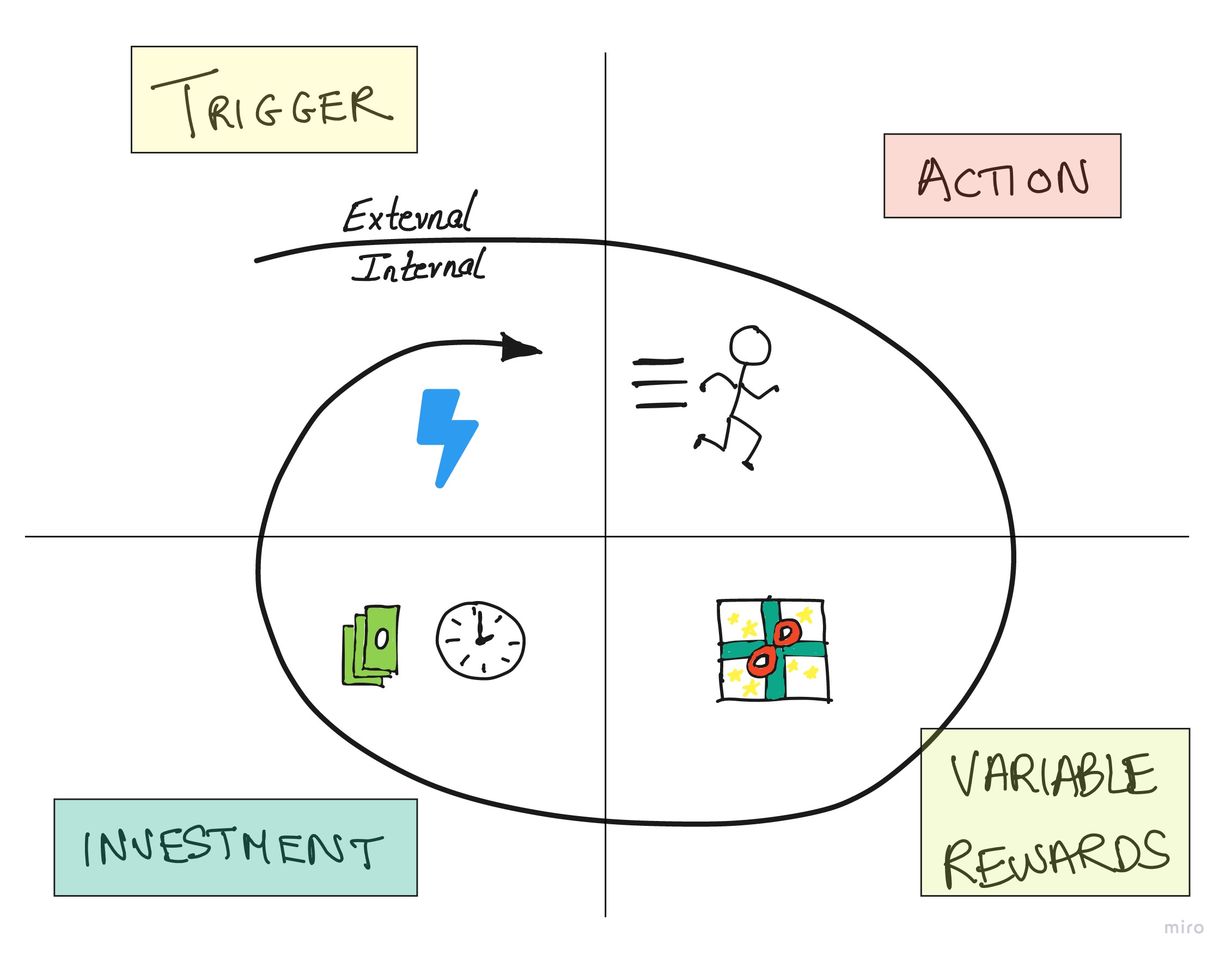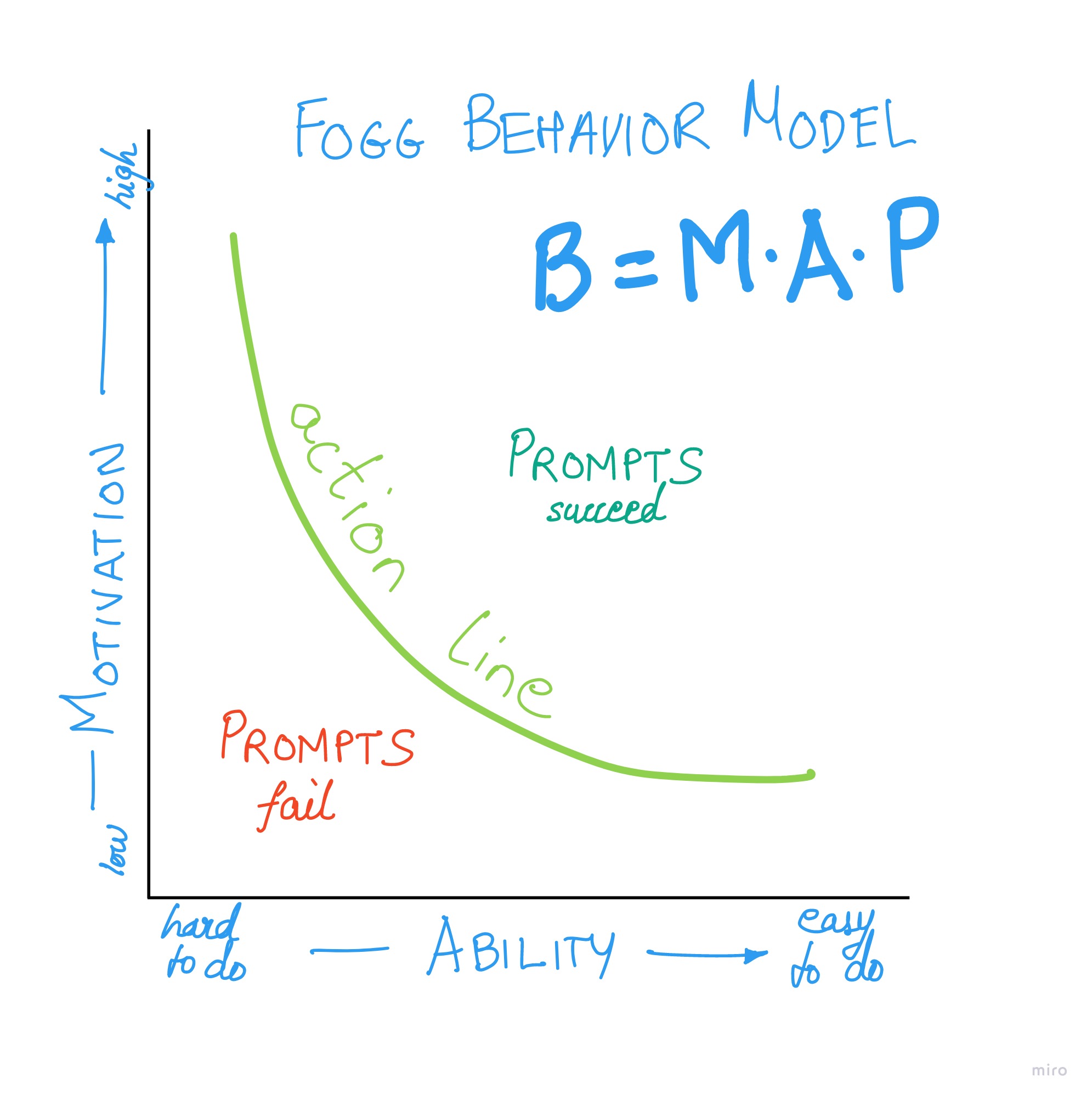Hooked
Key Ideas
Habit forming products can be created using the Hooked model: Trigger, Action, Variable Rewards, and Investment.

Details
Habits
Habits are defined as automatic behaviors triggered by situational cues.
Habits give us the ability to focus our attention on other things by storing automatic responses. Our brain takes a shortcut and stops actively deliberating over what to do next. The brain then codifies behaviors that provide a solution to whatever situation it encounters.
New habits are hard to form and easy to lose. To convert a behavior into a habit, it needs to happen frequently and deliver high utility.
Habit forming products are both Painkillers (solve an obvious need, relieving a specific pain, have quantifiable markets) and Vitamins (appeal to users emotional, rather than functional needs.)
The Hooked Model
The hooked model is a 4 step process to building habit forming products.

1. Trigger
A trigger actuates the behavior by providing the spark. There are two types of triggers:
- External triggers
- Paid triggers: Ads
- Earned triggers: Favorable press mentions, app store feature placements, viral videos.
- Relationship triggers: One person telling another about the product, Social media shares, word of mouth.
- Owned triggers. Email newsletter, app icon, notifications.
- Internal triggers
- When a product becomes associated with an emotion, thought, pre-existing routine, these become internal triggers to use the product. For example, people take a photo with the intent of posting it to Instagram.
2. Action
The author’s rely on BJ Fogg’s Fogg Behavioral Model to illustrate the MAP method for when people will take an action.

Some hearistics to increase motivation:
- Scarcity effect: Appearance of scarcity increases the value of a product. Eg. a limited time offer.
- Framing effect: Surroundings and context creates motivation. Eg. a concert pianist playing in a subway vs Carnegie Hall gets different audience attention.
- Anchoring effect: People anchor on one piece of information when making a decision. Eg. “Everything 30% off” fails to consider the markup or whether something was needed.
- Endowed Progress effect: Eg. For a loyalty card, starting with a blank card, with 9 spots to reward is worse than starting with a card with 10 spots and marking one off.
3. Variable Reward
The variable part is important. Without that, we have a vanilla feedback loop.
Types of rewards
- Rewards of the Tribe: make us feel accepted, attractive, important, and included.
- Rewards of the Hunt: based on the need to acquire physical objects.
- Rewards of the Self: intrinsic motivation to conquer obstacles, even for simply the satisfaction of doing so.
Finite vs Infinite Variability
- Finite variability is the same script, different characters, different show. This is commonly found in Hollywood (eg. Special Victims Unit, the best show ever created). The same model is exploited by Zynga and other FTP games. Companies making products with finite variability often operate under the studio model.
- Infinite variability. Multiplayer games, UGC sites like Facebook, YouTube, Pinterest. The variability never follows the same script.
- Inherent variability. When the act of using your product itself is variable, there is no need to add variability on top.
- Eg. Google searches and Uber rides.
4. Investment
Getting users to do a bit of work increases the odds that they will make another pass through the entire cycle. Strategies include:
Escalation of commitment: the more users invest time and effort into a product or service, the more they value it. Heuristics to understand why this happens:
- Ikea Effect - irrationally valueing our own efforts. Ikea furniture looks great because we made it ourselves.
- Consistency with past behavior - foot in the door effect. Once we’ve done something small, doing the next thing is easy.
- Avoiding cognitive dissonance - we value consistency with past behaviors, thoughts, and attitudes.
Storing value: getting users to store value in your product increases the chances they will use it again and reduces their propensity to churn. Ways to create stored value:
- Content Eg. Spotify listening history.
- Data Eg. Entering all financial information into Mint
- Followers Eg. Twitter follower graph.
- Reputation Eg. Online marketplaces like Yelp, AirBnB, Upwork
- Skill Eg. Photoshop or Figma or any prosumer tool that users have learned to use.